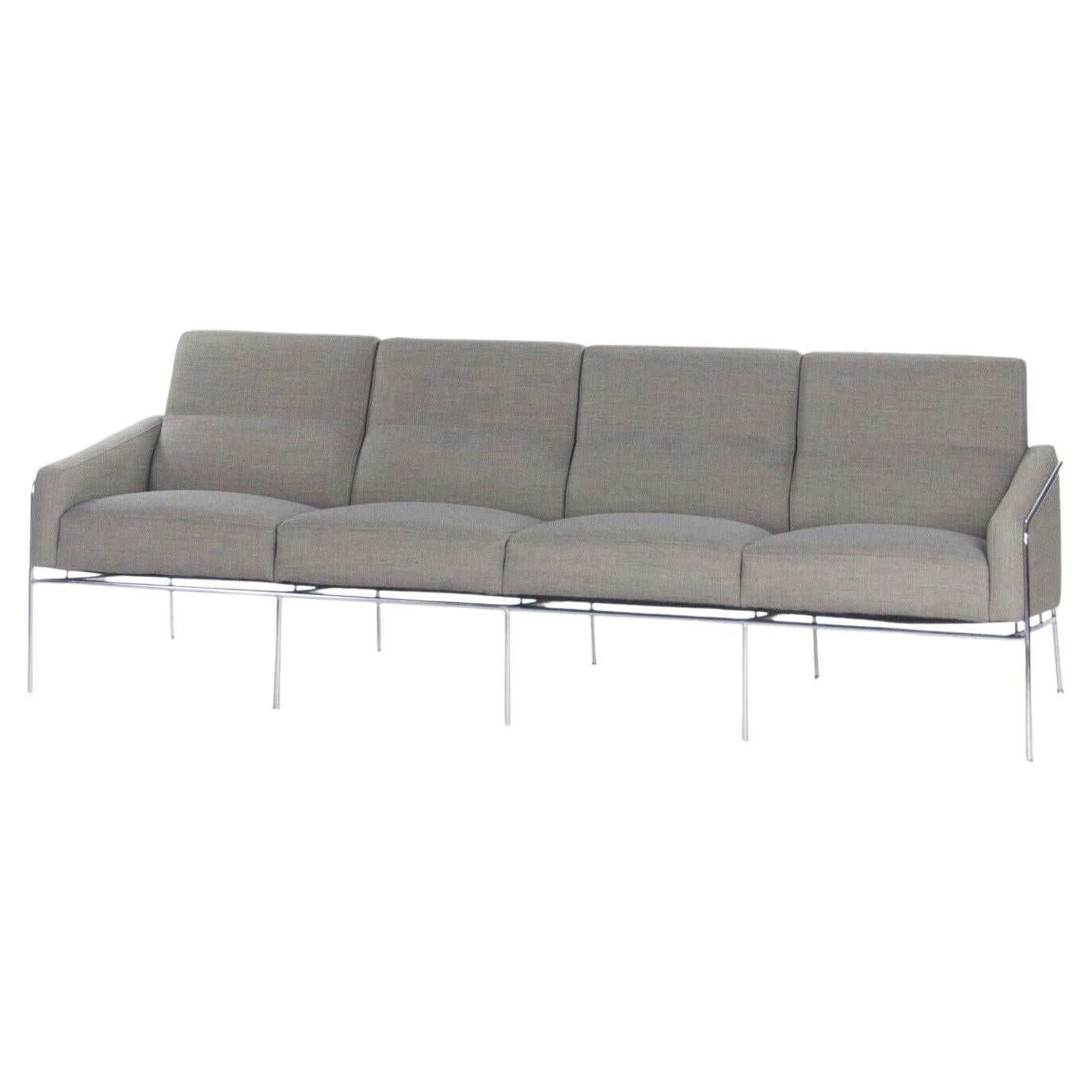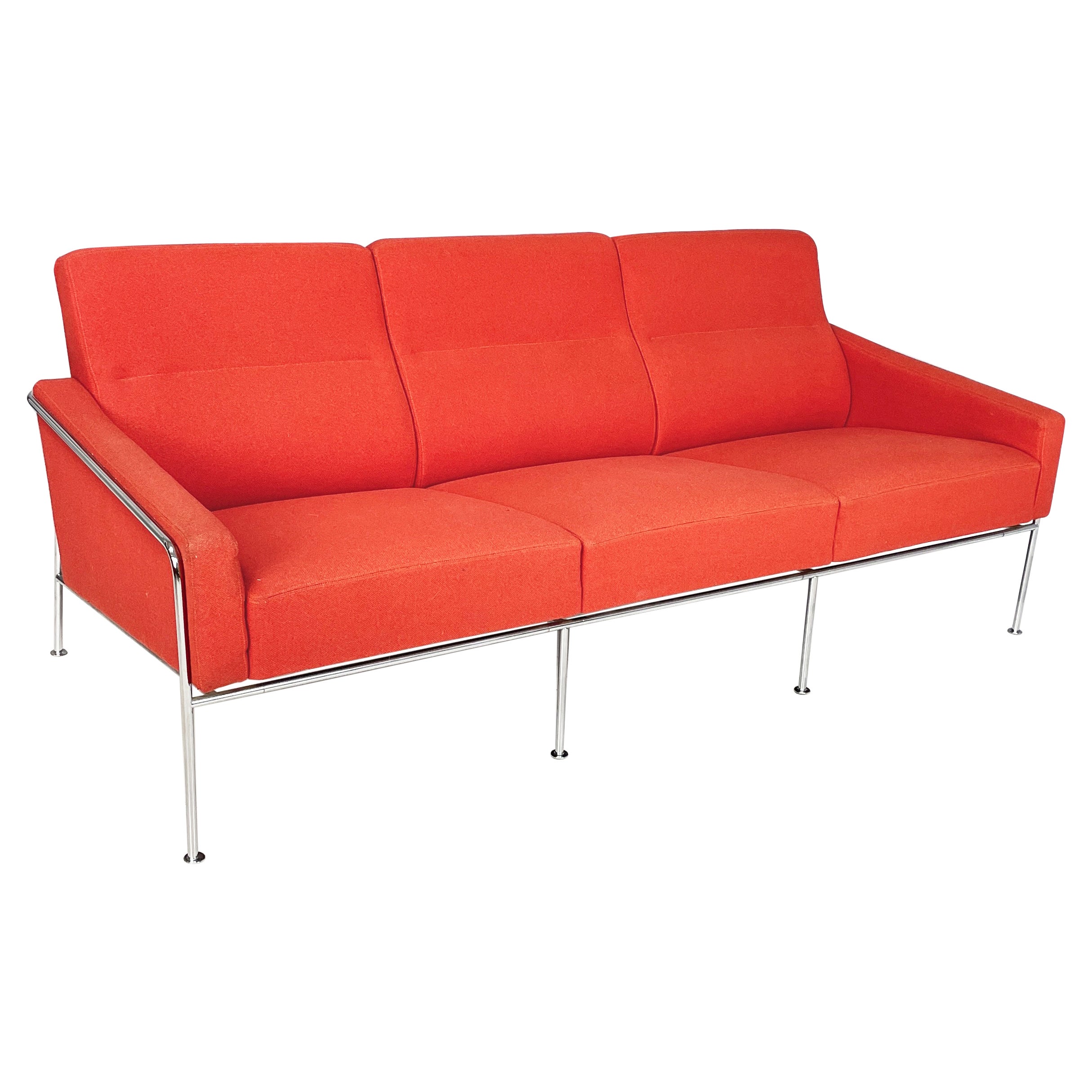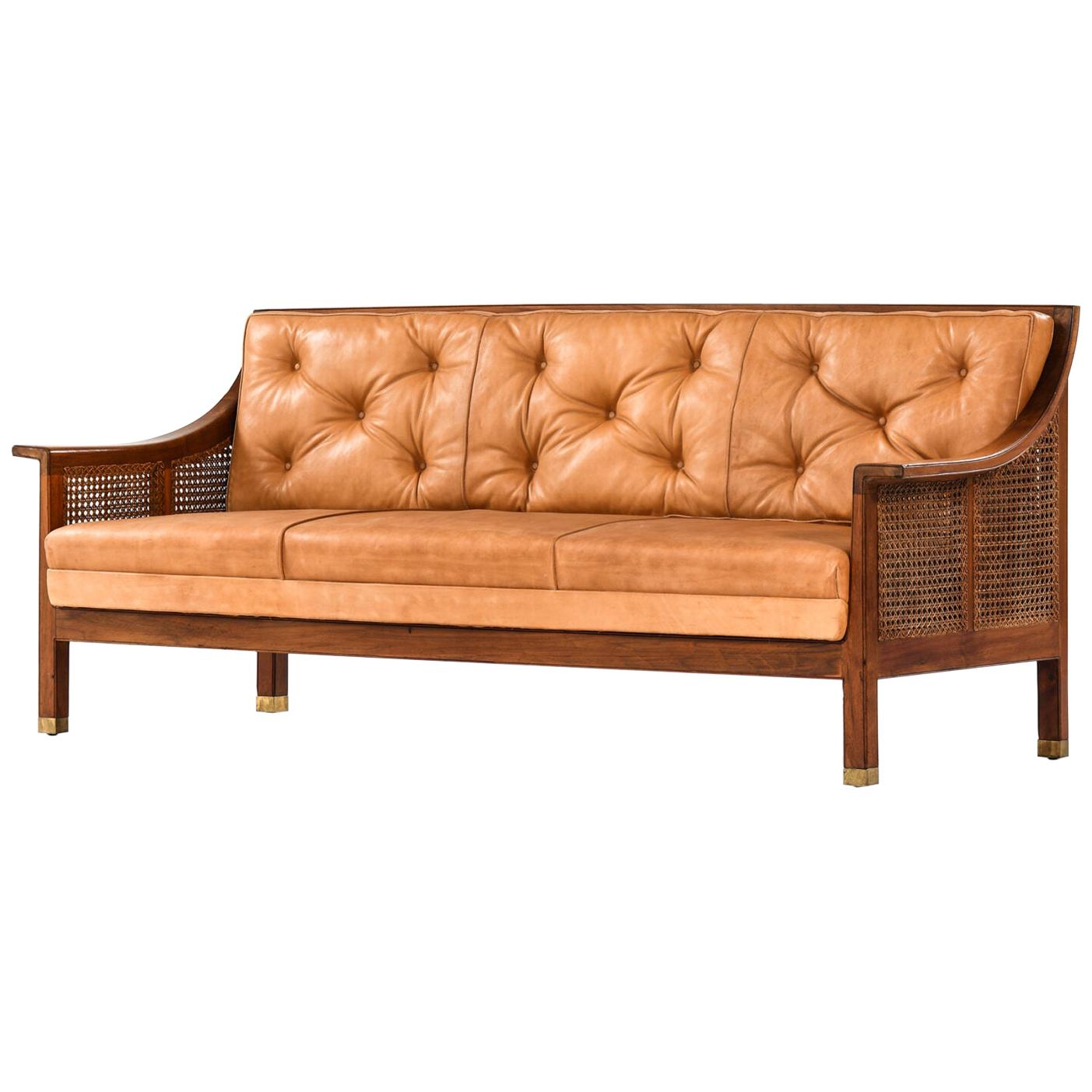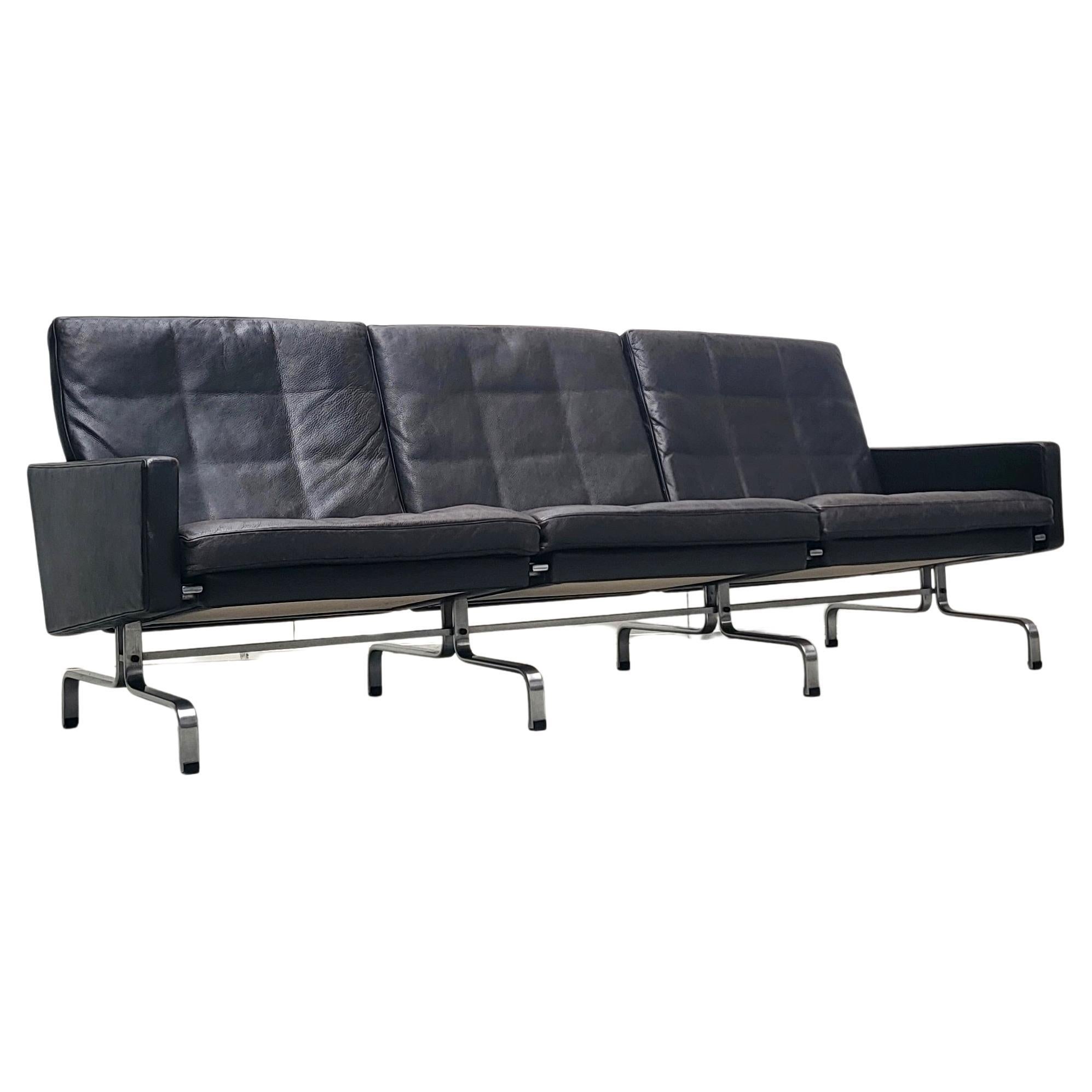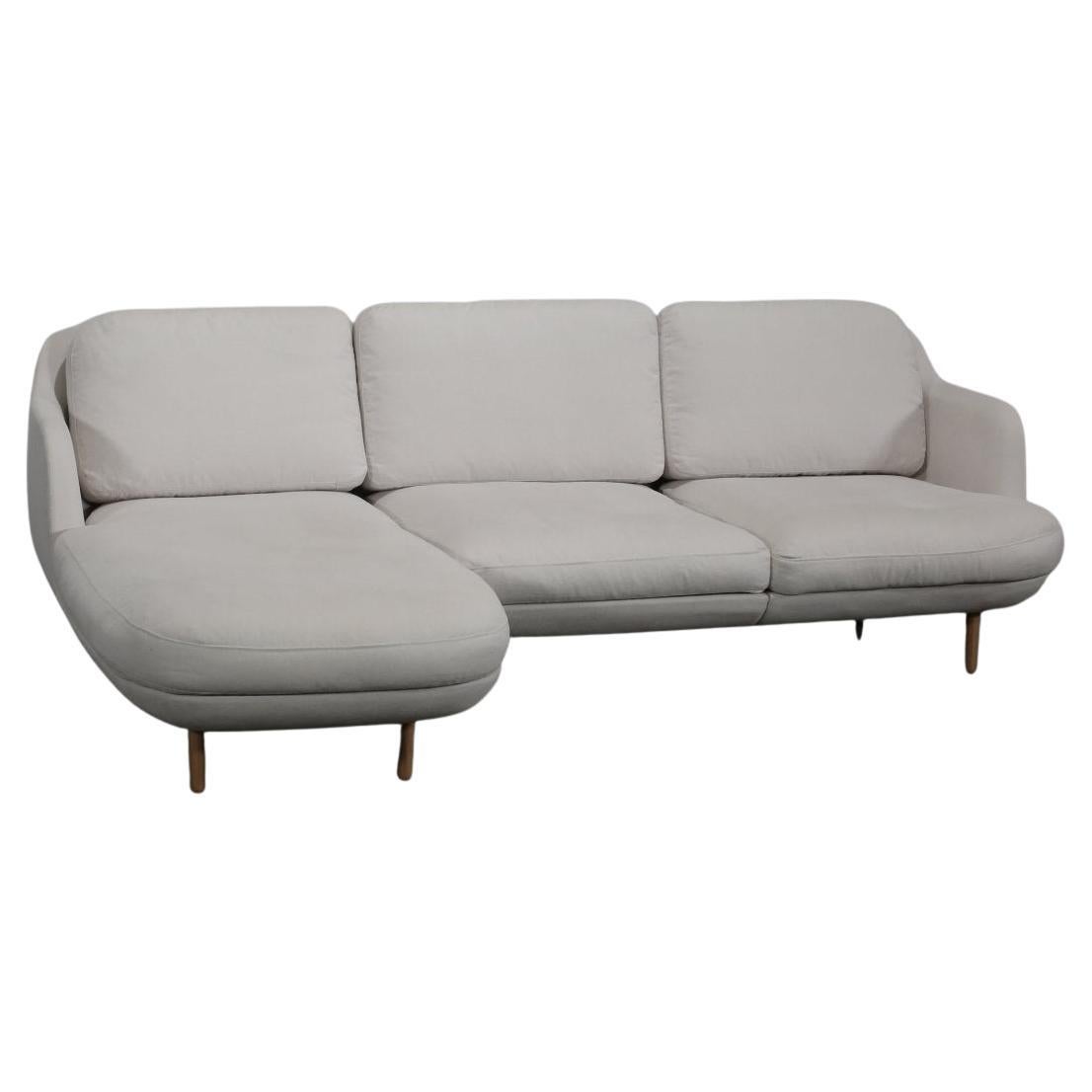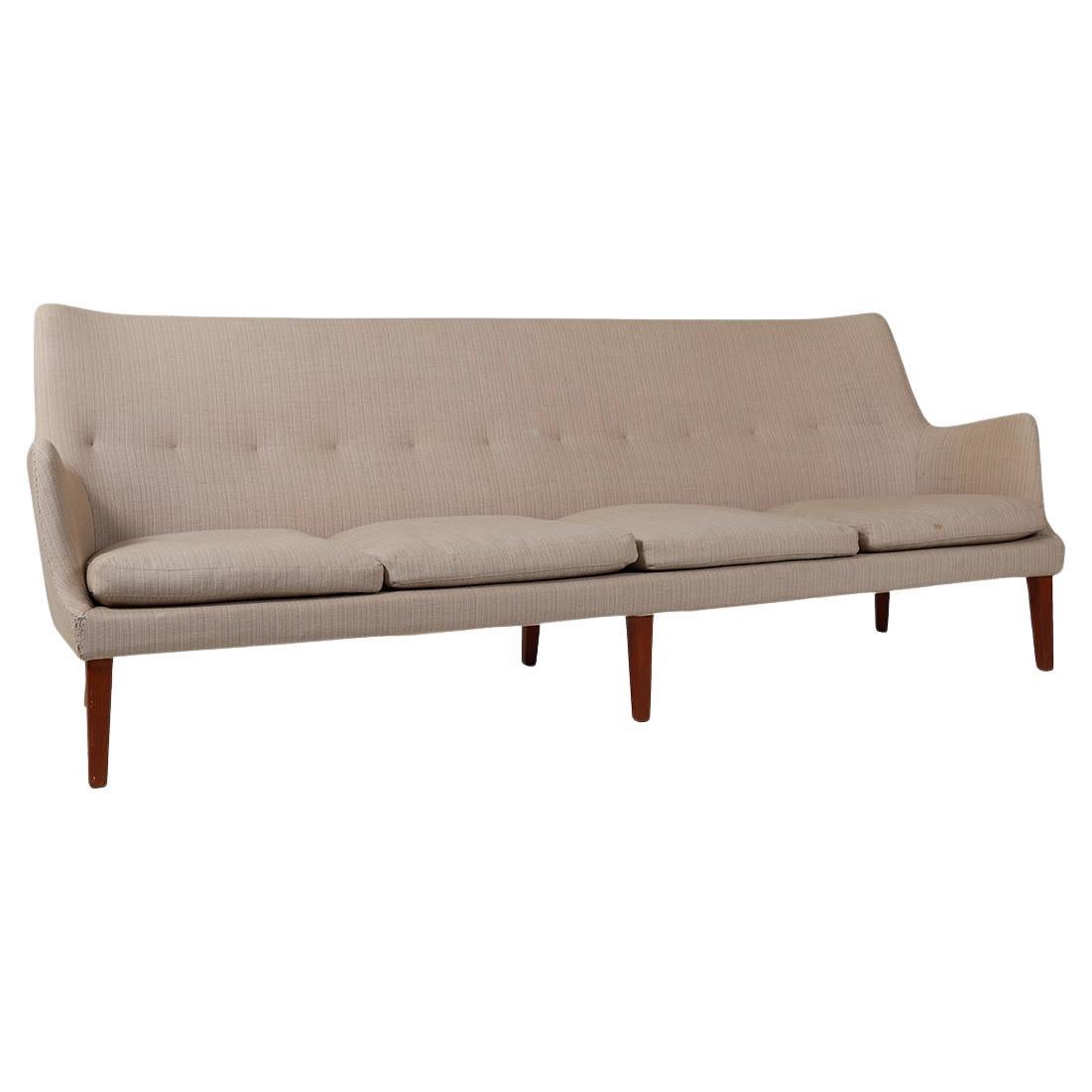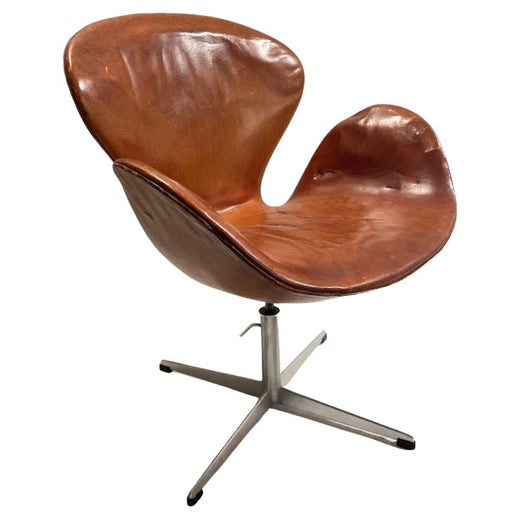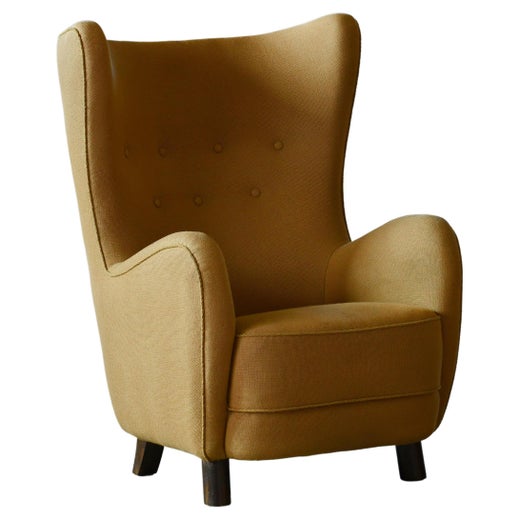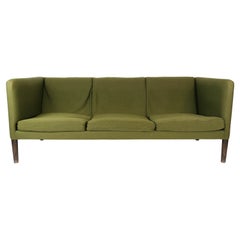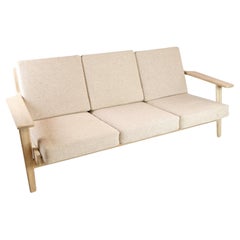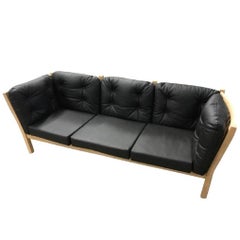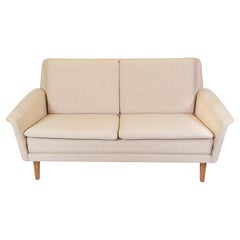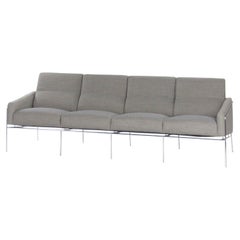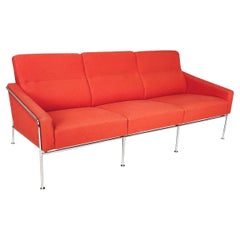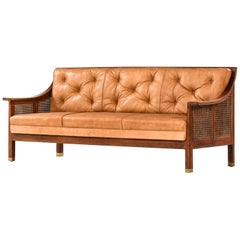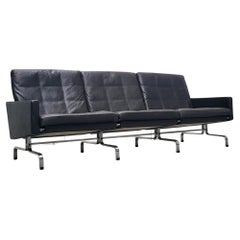Mayor Sofa Model AJ5 By Arne Jacobsen & Flemming Lassen From 1990s
About the Item
- Creator:Arne Jacobsen (Designer),Flemming Lassen (Designer)
- Dimensions:Height: 32.29 in (82 cm)Width: 76.38 in (194 cm)Depth: 25.99 in (66 cm)Seat Height: 16.93 in (43 cm)
- Style:Scandinavian Modern (Of the Period)
- Materials and Techniques:
- Place of Origin:
- Period:
- Date of Manufacture:1990s
- Condition:Wear consistent with age and use.
- Seller Location:Lejre, DK
- Reference Number:1stDibs: LU1209222469162
Arne Jacobsen
The eye-catching work of the Danish architect and designer Arne Jacobsen often introduces new collectors to mid-20th century furniture. With their fluid lines and sculptural presence, Jacobsen’s signature pieces — the elegant Swan chair and the cozy-yet-cutting edge Egg chair, both first presented in 1958 — are iconic representations of both the striking aesthetic of the designers of the era and their concomitant attention to practicality and comfort. Jacobsen designed furniture that had both gravitas and groove.
Though Jacobsen is a paragon of Danish modernism, his approach to design was the least “Danish” of those who are counted as his peers. The designs of Hans Wegner, Finn Juhl, Børge Mogensen and others grew out of their studies as cabinetmakers. They prized skilled craftsmanship and their primary material was carved, turned and joined wood. Jacobsen was first and foremost an architect, and while he shared his colleagues’ devotion to quality of construction, he was far more open to other materials such as metal and fiberglass.
Many of Jacobsen’s best-known pieces had their origin in architectural commissions. His molded-plywood, three-legged Ant chair (1952) was first designed for the cafeteria of a pharmaceutical company headquarters. The tall-backed Oxford chair was made for the use of dons at St. Catherine’s College, Oxford, whose Jacobsen-designed campus opened in 1962 (while still under construction). The Swan, Egg and Drop chairs and the AJ desk lamp were all created as part of Jacobsen’s plan for the SAS Royal Copenhagen Hotel, which opened in 1960. (The hotel has since been redecorated, but one guest room has been preserved with all-Jacobsen accoutrements.)
To Jacobsen’s mind, the chief merit of any design was practicality. He designed the first stainless-steel cutlery set made by the Danish silver company Georg Jensen; Jacobsen’s best-selling chair — the plywood Series 7 — was created to provide lightweight, stackable seating for modern eat-in kitchens. But as you will see from the objects on 1stDibs, style never took a backseat to function in Arne Jacobsen’s work. His work merits a place in any modern design collection.
Find authentic Arne Jacobsen chairs, tables, sofas and other furniture on 1stDibs.
Flemming Lassen
Architect Flemming Lassen was as noted for his furnishings as he was for his buildings, and he created bedroom furniture and other pieces specifically for the inviting interiors he brought to fruition. The Danish modernist is credited by many for his role in introducing his native country to functionalism, which prioritizes practicality over excessive ornamentation in design. Lassen is widely known for his comfortable, plush vintage sofas, lounge chairs and other seating, such as the overstuffed Tired Man armchair and Mingle sofa.
Lassen's mother and father were both painters. In the early 1900s, he and his brother — architect Mogens Lassen — began to attend boarding school where they befriended Arne Jacobsen, with whom Flemming would come to share an affinity for the principles of functionalism. Jacobsen became a leading light of Scandinavian modernism — his celebrated mid-century designs include the Swan chair and the Egg chair — and he and Flemming remained close throughout their lives, maintaining a strong personal relationship as well as a professional bond as like-minded colleagues.
Lassen and Jacobsen exchanged ideas and collaborated — the former shared his friend’s holistic approach to building projects, which is evidenced by Jacobsen’s design for the SAS Royal Hotel in Copenhagen. Jacobsen’s designs for the property encompassed everything from the architecture to interiors and furnishings. Together, Lassen and Jacobsen won an award at the “Architects Building and Housing Exhibition,” which was held at the Forum in Copenhagen in 1929. The duo was recognized for its “House of the Future,” a circular structure fitted with a then-revolutionary automatic garage door opener and windows that rolled up and down with a handle — just as they would in a car. The House of the Future has influenced Danish architecture to this day.
Flemming also often collaborated with his older brother Mogens, designing buildings and furniture alike. Mogens designed all kinds of tables and seating, and worked with the likes of Jacobsen, Finn Juhl and Ole Wanscher on various projects.
Flemming Lassen created the oak-and-sheepskin Tired Man armchair for The Copenhagen Cabinetmakers’ Guild Competition in 1935. Three years later, he designed the Mingle sofa. Both seating pieces are very popular with collectors today.
Find vintage Flemming Lassen furniture on 1stDibs.
- ShippingRetrieving quote...Shipping from: Lejre, Denmark
- Return Policy
More From This Seller
View AllVintage 1960s Danish Scandinavian Modern Sofas
Wool, Wood
Vintage 1950s Danish Mid-Century Modern Sofas
Oak
Vintage 1970s Danish Mid-Century Modern Sofas
Leather, Oak
Vintage 1970s Danish Mid-Century Modern Sofas
Wool
Vintage 1960s Danish Scandinavian Modern Sofas
Wool, Oak
Vintage 1960s Danish Mid-Century Modern Sofas
Oak
You May Also Like
Vintage 1950s American Modern Sofas
Metal
1990s Danish Modern Sofas
Metal
Vintage 1920s Danish Scandinavian Modern Sofas
Brass
Vintage 1980s Danish Sofas
Stainless Steel
21st Century and Contemporary Danish Modern Sofas
Aluminum
Mid-20th Century Scandinavian Scandinavian Modern Sofas
Upholstery, Teak
Read More
The 21 Most Popular Mid-Century Modern Chairs
You know the designs, now get the stories about how they came to be.
Arne Jacobsen’s Egg Chair Scrambled the Idea of What a Wingback Could Be
The curvaceous Egg was designed to cradle the body and offer privacy. Later, it became the seat of choice for bosses in movies, too.
